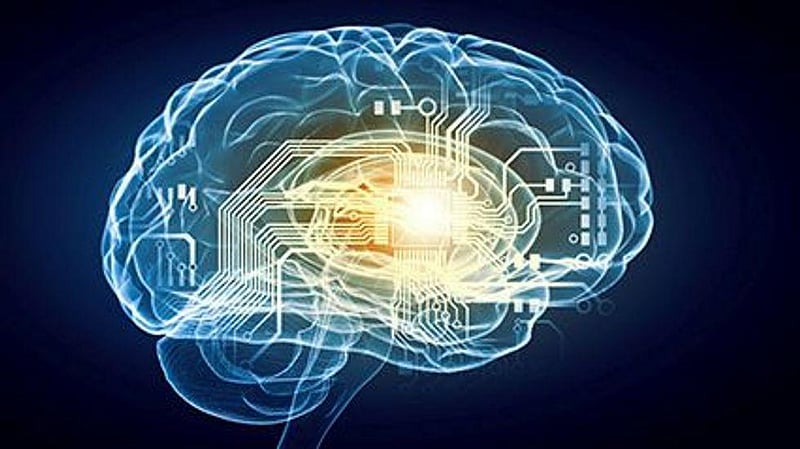New Way to Spot Early Alzheimer’s
 By Amy Norton HealthDay Reporter
By Amy Norton HealthDay Reporter
Specified improvements in a section of the brain stem, visible in scans, may possibly be a prospective early indicator of Alzheimer’s disorder, a new analyze suggests.
Applying different brain imaging approaches, researchers uncovered that lesser “integrity” in the brain stem area was linked to a more rapidly decline in memory and imagining in older grownups, as perfectly as specified brain improvements viewed in early Alzheimer’s.
The analysis — published Sept. 22 in the journal Science Translational Medicine — is the latest in a broad hard work to locate “biomarkers” that could support in before Alzheimer’s diagnosis.
Biomarkers are items that can be measured to reliably detect a disorder — a material in the blood or a brain scan finding, for instance.
Correct now, most folks with Alzheimer’s are diagnosed primarily based on evaluations of their memory, reasoning and other imagining expertise, claimed Rebecca Edelmayer, senior director of scientific engagement for the Alzheimer’s Association.
But researchers, she claimed, are functioning to superior comprehend the underlying disorder method and, along the way, locate biomarkers that capture Alzheimer’s sooner.
Most likely, there are various approaches to do that — which includes brain imaging and measuring specified substances in the cerebrospinal spinal fluid or blood. Some of these equipment are already currently being researched and, in some scenarios, utilized in affected individual care.
Edelmayer, who was not included in the new analyze, referred to as it “quite appealing.”
It highlights a prospective early marker that could aid distinguish “regular” brain getting older from a disorder method, she claimed.
The analyze targeted on a brain stem spot regarded as the locus coeruleus, or LC. Previous reports, of brain autopsies, have indicated that the LC is the to start with web-site in the brain to be hit with an abnormal accumulation of tau.
Tau is a protein current in balanced brain cells. But abnormal versions of tau — kinds that cling to other tau proteins — can kind as perfectly. In folks with Alzheimer’s, the brain gets riddled with tau “tangles,” as perfectly as “plaques,” which are abnormal clumps of another protein referred to as amyloid.
As opposed to amyloid buildup, which is viewed later on in daily life, accumulation of tau typically commences early. In simple fact, analysis suggests that about 50 percent of thirty- to forty-12 months-olds have tau accumulation in the LC, claimed Heidi Jacobs, the study’s lead researcher.
But whether that is in fact section of a disorder method has been unclear, described Jacobs, an assistant professor at Harvard Medical Faculty and Massachusetts Basic Medical center in Boston.
The new conclusions, she claimed, bolster the scenario that it is.
The success are primarily based on 174 older, mostly cognitively balanced, grownups. All experienced MRI scans to gauge the “integrity” of the LC. It can be not probable, Jacobs described, to instantly measure tau in the LC simply because of its smaller size. But recent innovations in MRI technological innovation enable a measure of the area’s integrity, which may possibly replicate tau buildup.
Aside from these MRI scans, members also underwent PET imaging. There the goal was to locate any tau and amyloid accumulation in other spots of the brain implicated in the early Alzheimer’s method. Lastly, their memory and other imagining abilities have been analyzed consistently for up to 8 yrs.
Piecing all of that details with each other, researchers uncovered that a picture emerged.
General, lesser integrity of the LC was associated to tau accumulation in a brain spot included in memory referred to as the entorhinal cortex. Lesser LC integrity was also linked to a faster decline in analyze participants’ imagining expertise.
That does not demonstrate tau buildup in the LC kicks off the total method, in accordance to Jacobs. But it identifies LC integrity as a prospective marker to forecast Alzheimer’s-associated decline.
Even although Alzheimer’s has no overcome, owning early markers that reliably place folks on a trajectory towards the disorder is considered crucial. For one particular, the markers could be utilized to establish members for medical trials screening new Alzheimer’s treatments.
That can already be performed with PET imaging, Jacobs mentioned — but it can be probable that LC integrity could establish prospective analyze members at an before stage.
One particular purpose past remedy trials have unsuccessful, Jacobs claimed, may possibly be that they have been treating folks “much too late.”
When many folks may possibly have listened to of the amyloid plaques that mark Alzheimer’s, Edelmayer claimed it can be in fact tau accumulation that a lot more intently correlates with cognitive decline. And it can be believed that an conversation in between the proteins, and other things, may possibly be at work.
“There really is a cascade of activities that happens ten to 20 yrs right before the medical signals of Alzheimer’s,” Edelmayer claimed.
Any technological innovation that can reliably detect improvements along that path could perhaps lead to before diagnosis, she claimed.
Far more details
The Alzheimer’s Association has a lot more on progress towards before Alzheimer’s diagnosis.
Sources: Heidi Jacobs, PhD, assistant professor, radiology, Harvard Medical Faculty, and Massachusetts Basic Medical center Heart for Medical Imaging, Boston Rebecca Edelmayer, PhD, senior director, scientific engagement, Alzheimer’s Association, Chicago Science Translational Medicine, online, Sept. 22, 2021

Copyright © 2021 HealthDay. All rights reserved.
SLIDESHOW
The Levels of Dementia: Alzheimer’s Sickness and Ageing Brains
See Slideshow

